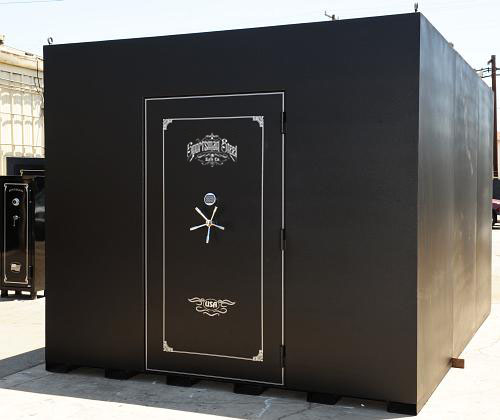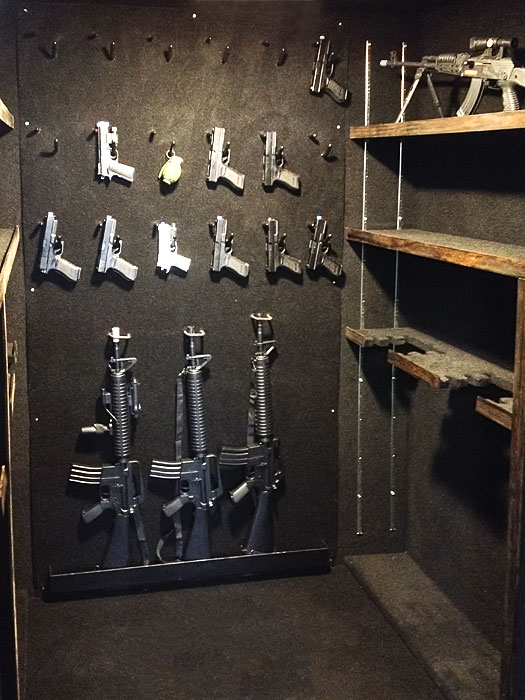
- #LEAKING METAL STORM SHELTER INSTALL#
- #LEAKING METAL STORM SHELTER PORTABLE#
- #LEAKING METAL STORM SHELTER FREE#
Additionally, cracks in the walls or roofs should be covered with sealants to avoid entry points. The simplest way to prevent water damage is to grade the soil away from your shelter’s entrance. Over time, the shelter’s walls and floors could begin to deteriorate, undermining its effectiveness. Water can cause extensive damage inside a shelter, including the growth of mold or fungus. You should ensure that the shelter and its surrounding areas don’t have any water present. Make sure to close these and have pest exterminated if need be. Lastly, check for holes or gaps within the shelter that could suggest pests and rodents’ presence. Because a storm shelter is a highly enclosed area, dust particles can cause allergic reactions and respiratory problems. The shelter’s foundation also needs to be comprehensively dusted and vacuumed. Removable 6 metal steps and 8 metal benches powder coated. Ideally, the slope of the soil should be at least a 6-inch drop for every 10 feet away from the opening of the storm cellar. Front lock sliding door with 2 air vents to maximize oxygen and airflow. The right grade forces water to flow away from the storm cellar.
#LEAKING METAL STORM SHELTER FREE#
Additionally, make sure blankets, pillows, and helmets are free of dust particles and reachable. Heavy-duty steel construction with 1/4 steel plate lid. Stockpiled food, clothing, and essential items should be easily accessible. Make sure the closets and compartments in your storm shelter are orderly and organized. The single-piece lid is larger than the frame of the saferoom opening and sits above the frame, not down inside the frame. The lid is thick steel plate with added structural tubing to provide extra strength. Clean Out the Shelter and Closets Thoroughly All of our in ground FlatSafe Storm & Tornado shelters come with our patented single piece lid system. Here are a few tips on how you can ensure your storm shelter is in optimal condition when there’s a storm approaching. However, for them to function as a place where your family can feel comfortable and safe, they need to be clean and well maintained. These include forest fires, tornadoes, and hurricanes.

You will need a few of these to handle a normal sized room.A storm shelter can be a life-saving installation in the home that can protect you and your family from various calamities. You can use grilling charcoal and replace it monthly or the wood kind and replace it yearly. If the lid/container is larger, more holes will be needed. You will need a few coffee cans with lids or any type of container with a lid. This can be made with items you already have at home or can easily get. Our concrete shelters have a 10-year warranty in the event of leaking. Our steel shelters have a limited lifetime warranty in leaking, floating or any other manufacturing defect problem. Browse our various sizes and options to find your ideal tornado safe room. Tip 5: Create Charcoal FilterĪnother economical way to rid your storm shelter of humidity is to create a charcoal filter. Protect the ones you love the most with EF5 Tornado Shelters.

These will have to be replaced after the snow and ice blend has melted. The snow and ice melt collects the water and the water drips into the bucket and then you empty the bucket. You hang that bag up and place a bucket underneath. You dump a bag of the mixture into a cloth bag, like a pillow case. This is how you use the snow and ice melt. It only costs about seven to 10 dollars for a bag so it is economical. Tip 4: Use Snow Removal SaltĪ calcium chloride and magnesium chloride blend, otherwise known as snow removal salt can also be used. The cost is about 10 dollars each and they will need to be replaced every few months as the crystals melt. They can be found online or most commonly in boating areas. For an average size room, two or three kits should work.

The crystals soak up the moisture and the water drips into the catch tray which can then be emptied out. These work by emptying the crystals on a tray and placing the tray over a catch tray. Tip 3: Condensation Crystal Packīuy a condensation crystal pack.
#LEAKING METAL STORM SHELTER PORTABLE#
The portable units will cost you anywhere from 50 dollars to 1000 dollars. The portable units need to have a power source and should be kept running continuously. from wood framing, metal stud framing, or structural insulated panels (SIPs). If you get one too small, it will not work properly. Taking Shelter from the Storm: Building a Safe Room 1. The dehumidifier should be chosen carefully based on the size of the room.
#LEAKING METAL STORM SHELTER INSTALL#
You can install a built-in dehumidifier or simply buy a portable one. If it has already been built, try to install these without damaging the room. If you are building your own shelter, you should install proper ventilation using HVAC ducts and exhaust fans. The room should be sealed against leaks and standing water removed. To remove humidity from the room, the first thing you need to do is find the source.


 0 kommentar(er)
0 kommentar(er)
